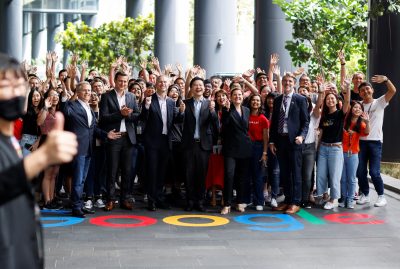Author: Faizal Bin Yahya, NUS
COVID-19 border closures disrupted Singapore’s connectivity with global trading and business networks. Foreign professionals who had been integrated into Singapore society for years returned to their home countries.


The political push to limit the number of foreign workers is also growing, especially in the services sector. The sector’s Dependency Ratio Ceiling — which determines the ratio of foreign to local workers in any company — had been reduced from 38 to 35 per cent in January 2021.
Before the pandemic, Singapore’s strong economic fundamentals and strategic location at the heart of Southeast Asia proved attractive to big tech firms. During the US–China ‘tech cold war’ Singapore has continued to pursue a strategy of openness and innovation.
But a survey by the human resources firm GlobalManpower ranked Singapore as the third most talent-starved among forty countries, with 84 per cent of companies in Singapore reporting talent shortages. Singapore’s ‘hubbing’ strategy to lure multinational companies has come under threat as a result.
80 of the world’s top 100 tech firms are present in Singapore, increasing the pressure on a shrinking pool of workers. Traditional tech firms such as Google, IBM and Microsoft have been present in Singapore for several years, while newer ones like Zoom, Twitter, Paypal, Tencent, Alibaba and ByteDance have established operations in the city-state since the pandemic.
The minister in charge of the government’s Smart Nation Initiative, Vivian Balakrishnan, highlighted that the information and communication technology (ICT) sector will need another 60,000 workers by 2023. But Singapore’s education system only produces 2,800 ICT graduates per year — and only a third of Singapore’s tech workforce is local.
Meanwhile, Amazon Web Services estimates that Singapore will need 1.2 million additional digital workers by 2025. This mismatch of supply and demand indicates that vacancies will continue to be mostly filled by foreigners. Acknowledging that competition in the digital economy space will intensify, Singapore introduced a new Tech Pass in January 2021 that allowed established foreign tech entrepreneurs, leaders and experts to work in Singapore.
Yet Singapore must balance its need for foreign talent with local unease about the rate of hiring from abroad, especially in the professional services positions that are sought after by locals.
Responding to voters’ concerns, the Singaporean government has introduced several initiatives to nurture local talent, such as the Singapore Global Executive Programme (SGEP) in its Budget 2022. One way in which the SGEP supports local companies is by curating a career development journey for their local staff.
In August 2022, the Minister of Manpower Tan See Leng introduced several policy initiatives to strengthen Singapore’s position as a talent hub. One of these is the Overseas Networks & Expertise (ONE) Pass, a 5-year work permit to be implemented in January 2023. It also allows eligible applicants to work for multiple companies in Singapore simultaneously.
The ONE Pass is available for employees earning at least S$30,000 (US$ 21,000) per month or those with outstanding achievements in arts and culture, sports, science and technology, or research and academia. For new overseas candidates, the previous or prospective employer must have a market capitalisation of US$500 million or an annual revenue of at least US$200 million.
Unlike the Tech Pass which is meant exclusively for the tech sector, the ONE Pass is applicable across industries. This was a response to requests from other business sectors — such as sports and arts — for global talent.
This proactive recruitment strategy is meant to create a virtuous cycle of economic development. The Singaporean government highlights that the core of its economic development rests on the skills, knowledge and creativity of its human capital. The ONE Pass is a key policy lever for this offensive.
But global talent is in great demand, and Singapore’s own skilled professionals are also leaving for greener pastures. In the 2022 Global Talent Competitiveness Index Report, compiled by the INSEAD business school, Singapore ranked sixth among 175 cities in attracting and developing talent. Singapore had fallen behind San Francisco, Boston, Zurich, Seattle and Lausanne.
The ONE Pass could help Singapore regain competitiveness in several ways. Few locals would be competing in the employment categories it covers, lessening scrutiny from voters. At the same time, the government will engage the global talent recruited via the Pass as much as possible while they remain in Singapore.
The ONE Pass is targeted towards recruiting global talent or ’rainmakers’ across all sectors and forms a key component of Singapore’s talent recruitment strategy. These highly mobile professionals possess the networks, deep skills, and expertise that will be essential ingredients in the innovative economy that Singapore aspires to become. Businesses go where the talent is, and talent goes where the businesses are. When a core of global talent are embedded in its economy, Singapore will be able to attract the best of both.
Dr Faizal Bin Yahya is Senior Research Fellow in the Governance and Economy Department at the Institute of Policy Studies, National University of Singapore.

